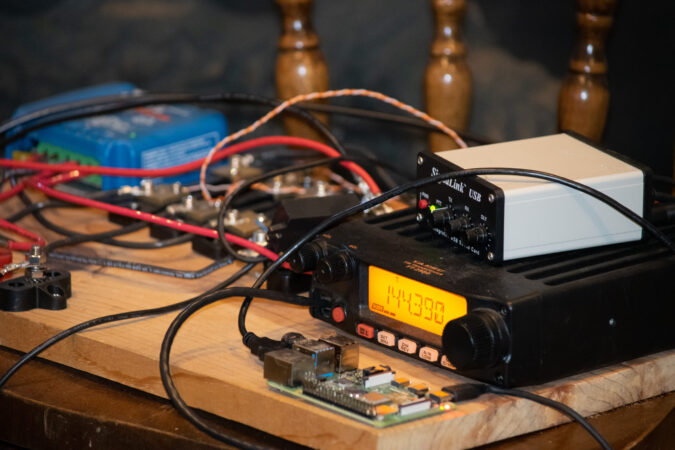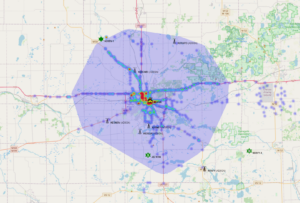
Ahh, I had been waiting for today, among many projects on my list, this is one I have been looking forward to the most. Then oddly another project jumped into my lap- but that is a different story for another day.
Since beginning in Amateur Radio two years ago I’ve been interested in its GPS tracking capabilities. As with many things, there are a lot of ‘moving parts’ with APRS. From the radio you choose to use to generate packets, to another tuned to receive them, and store them in database ready for display on the web – I seem to enjoy every step.
Firstly I was able to get my private aprsc server and APRS Direct Tools stack moved and operating on the new domain (map.jeromyalexander.com,) added to the top menu of the site, and get both digipeaters (QTH and Mobile) back online with the new address as well.
Was that greek? Sorry.
At my house in Jackson (QTH) I have a radio tuned to 144.390 mHz (just a bit north of 106.1 FM) which is connected to an external sound card, connected to a raspberry pi. (See top photo.)
Separately, in my vehicle I have another raspberry pi with a GPS receiver and a radio tuned to the same 144.390 mHz. That radio every so often sends a “packet”. That packet on the radio sounds like a five second AOL dialup tone and it contains my call sign to identify me and my location from the GPS. Right now this station is on my living room table.. however, it will soon be in the Mustang. Additionally, this allows listens for packets in its surroundings – such as I walk with my HT (a portable handheld radio with GPS.)

No one actually listens to these packets (I’m far from the only one using APRS in the area) except that radio I mentioned first, the QTH Digipeater. That radio back at the house (QTH) listens for the packets, interprets them, stores them in a database, and repeats them from my station – so that further away stations can hear them also. From that database, and on the same machine runs a web server to display a map, with all the GPS located stations displayed – that are close enough to be heard. This next image shows the approximate coverage area of my station – the area I can ‘listen’ to.

Let me tell you one thing: 1) I have a lot more to say about Amateur Radio and APRS; for tonight I will leave this post short. So many things that I can improve and explain on this system. For you, if you’re interested feel free to explore the map above and maybe do some online research into amateur radio or APRS?
1 thought on “An APRS radio day”